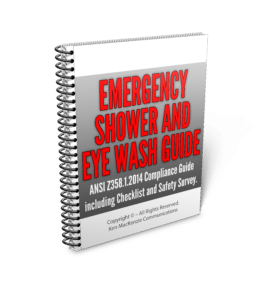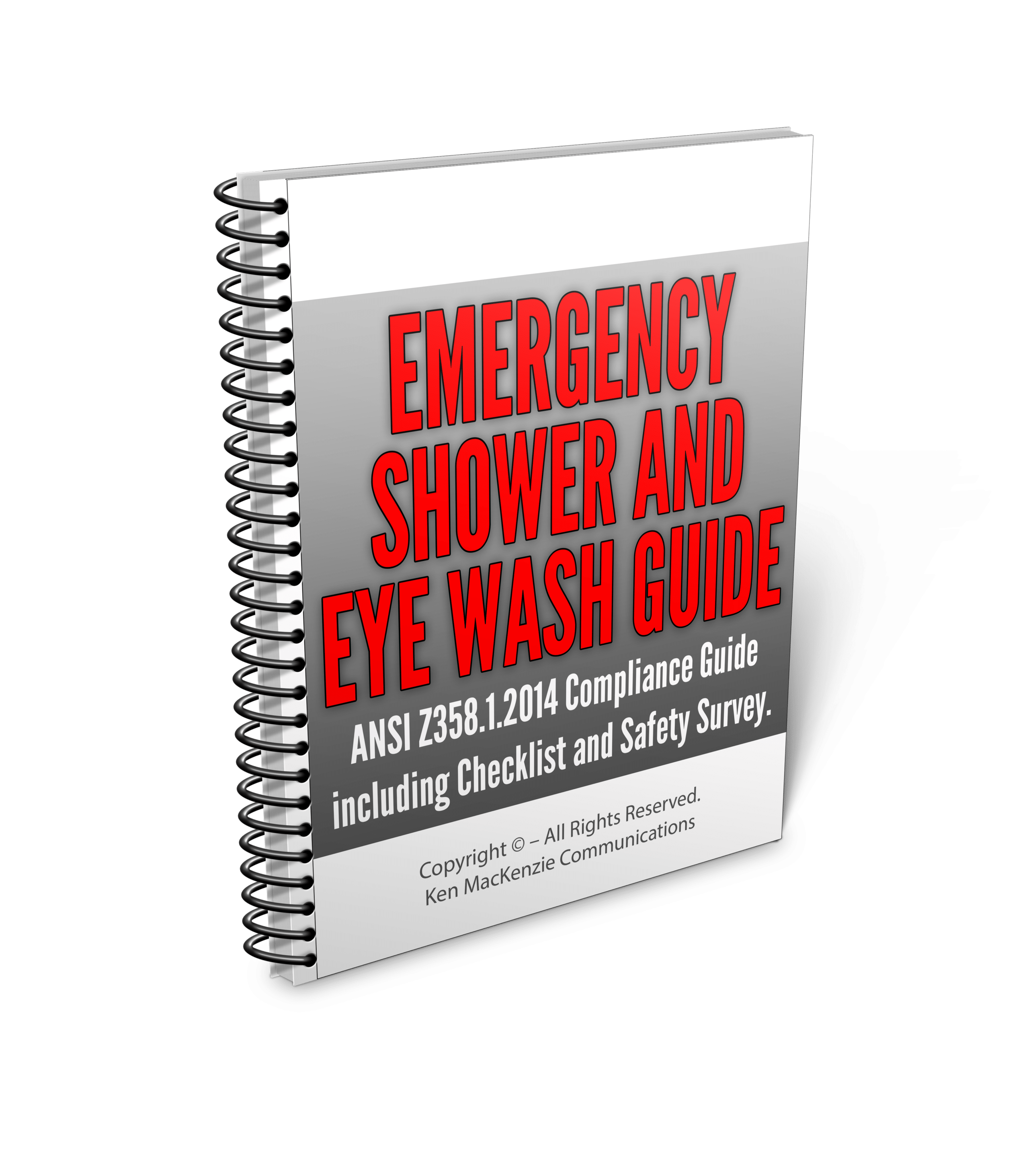Crucial Safety Shower Clearance Requirements
When it comes to workplace safety, there are few tools as crucial as safety showers. These emergency fixtures can prevent serious injuries and even save lives in hazardous environments.
However, to ensure their effectiveness, it is essential to understand and adhere to safety shower clearance requirements. In this comprehensive guide, we will delve into the importance of safety showers, their clearance requirements, and how to maintain them to guarantee optimal workplace safety.
The Significance of Safety Showers
Safety showers are specially designed emergency fixtures that provide on-the-spot decontamination in case of accidental exposure to hazardous substances. They are primarily used in laboratories, chemical plants, manufacturing facilities, and other work environments where employees might come into contact with harmful chemicals or materials.
The immediate use of safety showers can significantly reduce the extent of injuries resulting from chemical splashes or exposure to corrosive substances. They are a vital component of any workplace safety plan, ensuring that employees have a quick and effective way to rinse off hazardous materials, thus preventing further harm.
Emergency Shower and Eyewash Guide
Safety Shower Clearance Requirements
To guarantee the proper functioning of safety showers, it is crucial to adhere to clearance requirements as prescribed by relevant safety regulations. These clearance requirements ensure that the safety shower area is easily accessible and free from obstructions, allowing for swift response during emergencies. Below are the key clearance requirements that must be followed:
1. Clear Space Around the Safety Shower
The area surrounding the safety shower must be clear of any obstacles or clutter that could impede access. There should be enough space for a person to stand comfortably under the showerhead without any hindrance. This clear space is essential to allow quick and unobstructed access to the safety shower during emergencies.
2. Accessible Placement
Safety showers should be installed in easily accessible locations where employees work with hazardous materials. The placement of safety showers should be strategically planned so that employees can reach them within ten seconds in case of accidental exposure.
3. Illumination and Signage
Proper illumination and clear signage are critical for locating safety showers quickly. Well-lit areas with prominent and easily visible signs will ensure that employees can easily find the safety shower during an emergency, even in dimly lit environments.
4. Safety Shower Clearance Requirements – Above and Around the Showerhead
The area directly above the safety showerhead should be unobstructed, allowing the water to flow freely without hindrance. Additionally, there should be ample space around the showerhead to ensure that a person can move freely while using the safety shower.
5. Compliance with Regulatory Standards
Above all, it is essential to adhere to the safety shower clearance requirements outlined in relevant safety standards, such as OSHA (Occupational Safety and Health Administration) or ANSI (American National Standards Institute) guidelines. Compliance with these standards ensures that the safety showers meet the necessary criteria for optimal performance during emergencies.
Emergency Shower and Eyewash Guide
Maintaining Safety Showers for Maximum Effectiveness
Ensuring the safety showers are in pristine working condition is paramount to their effectiveness during critical situations. Regular maintenance and inspections should be carried out to identify and rectify any issues promptly. Here are some essential maintenance tips for safety showers:
1. Regular Testing
Safety showers should be tested on a weekly basis to ensure they are functioning correctly. During testing, it should be confirmed that water flows freely from the showerhead and that there are no leaks or blockages.
2. Temperature Regulation
The temperature of the water delivered by the safety shower should be within the acceptable range to prevent any further harm to the affected person. Regularly check and adjust the temperature to comply with safety regulations.
3. Immediate Repairs
If any issues are identified during testing or inspections, immediate repairs should be conducted by qualified personnel. A well-maintained safety shower can be the difference between a minor incident and a severe accident.
4. Employee Training
Proper training should be provided to all employees regarding the location and proper use of safety showers. Additionally, employees should be aware of the importance of reporting any malfunctions or damage they notice during routine inspections.
5. Annual Inspections
In addition to regular weekly testing, safety showers should undergo annual inspections by certified professionals. These comprehensive inspections will identify any underlying issues that may not be apparent during routine testing.
Before You Go….
Safety showers play a pivotal role in maintaining workplace safety in industries where exposure to hazardous substances is a daily risk. Adhering to safety shower clearance requirements ensures that these life-saving fixtures are easily accessible and ready to be used when needed the most. Regular maintenance and inspections are essential to keeping safety showers in optimal condition, ready to act swiftly in emergencies.
As a responsible employer, it is crucial to prioritize workplace safety by investing in safety showers and providing proper training to employees. By following the guidelines and tips mentioned in this article, you can ensure that your workplace is equipped to handle emergencies and protect the well-being of your valued workforce.
Remember, workplace safety is everyone’s responsibility, and safety showers are a critical component of that collective effort. Prioritize safety, adhere to regulations, and maintain your safety showers diligently – your employees’ lives may depend on it.
Frequently Asked Questions (FAQs) about Safety Shower Clearance Requirements
Why are safety showers essential in the workplace?
Safety showers are essential in the workplace because they provide a quick and effective means of decontamination in case of accidental exposure to hazardous substances. They can significantly reduce the severity of injuries and protect employees’ health and well-being.
What industries typically use safety showers?
Safety showers are commonly used in industries where employees work with hazardous chemicals, materials, or substances. Some typical industries include laboratories, chemical plants, manufacturing facilities, research centers, and oil refineries.
What are safety shower clearance requirements?
Safety shower clearance requirements refer to the specific guidelines and regulations that dictate the proper installation and placement of safety showers in the workplace. These requirements ensure that safety showers are easily accessible and ready to use during emergencies.
How much clear space is required around the safety shower?
The area surrounding the safety shower should be clear of any obstructions or clutter to allow easy and unimpeded access. There should be enough space for a person to stand comfortably under the showerhead without hindrance.
Can safety showers be installed outdoors?
Yes, safety showers can be installed outdoors, but it is crucial to ensure that they are adequately protected from environmental elements that could affect their performance. Outdoor safety showers should be designed to withstand varying weather conditions.
Are there specific temperature requirements for the water delivered by safety showers?
Yes, the temperature of the water delivered by safety showers should be within an acceptable range to prevent further harm to the affected person. The water should not be too hot or too cold, as extreme temperatures can exacerbate injuries.
Who should be responsible for testing and maintaining safety showers?
Employers are responsible for testing and maintaining safety showers to ensure their proper functionality. Regular inspections and testing should be carried out, and any issues should be promptly addressed by qualified personnel.
How often should safety showers be tested?
Safety showers should be tested on a weekly basis to ensure that they are in proper working condition. Regular testing helps identify any malfunctions or defects that may impede their performance during emergencies.
Can employees use safety showers for other purposes?
Safety showers are designated for emergency use only and should not be used for any other purposes, such as rinsing equipment or cleaning. This ensures that they are always ready for immediate decontamination in case of an accident.
Are there penalties for non-compliance with safety shower clearance requirements?
Yes, non-compliance with safety shower clearance requirements can lead to penalties and fines from regulatory authorities. Moreover, failing to adhere to safety regulations puts employees’ safety at risk, and it may lead to severe consequences in the event of an accident.
Remember, workplace safety should always be a top priority, and ensuring compliance with safety shower clearance requirements is a crucial step towards creating a safe and secure working environment for all employees.
The information provided in this safety shower clearance requirements article is for informational purposes only and should not be considered as professional advice. Always consult qualified professionals for specific safety recommendations and guidance for your workplace.
Links on this osha safety shower clearance requirements page are sponsored affiliate links and the owner makes commission if you buy after clicking these links. The owner is not a bona-fide user of these osha safety shower clearance requirements. However, he has thoroughly researched osha safety shower clearance requirements and provided a personal opinion only. This disclosure is in accordance with the Federal Trade Commission’s 16 CFR, Part 255: “Guides Concerning the Use of Endorsements and Testimonials in Advertising.”
Filed under: ANSI Z358.1 2014


